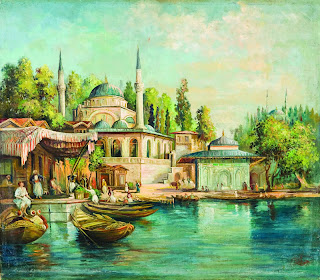Hilye-i Serif, the Artist's Battle Cry
Man has an intrinsic compass pointing towards beauty and aesthetics. It chooses one form over another, prefers a particular style, ratio, color and shape among many. But above all, it urges him/her to copy, reproduce and eventually create. From birth, humans accumulate all sorts of input surrounding themselves, and one day, just like a volcano, it erupts. Some of this lava is more appealing than others to many, and it is called art.
For centuries, Muslim artists had suffered from an interpretation of Koran that claimed drawing of human body was a sin (Sadly, it is still true for some parts of the world). Yet, the urge to create, to express themselves was so great that they looked for ways to channel their creativity while satisfying the clerics who defended this bigotry vigorously. But there is a crack, a crack in everything, that's where the light comes in. And they found their crack: hilye-i serif. Only in this case, the light went out, not in.
Hilye-i serif is a form of art, a non-painting let's say, where the prophet Mohammed's appearance and virtues are written but not drawn. Each hilye-i serif essentially says the same thing, it glorifies the prophet. It did not matter for the artist as a matter of fact, what he cared was the form, the style, the shape, the colors, not the content. Restricted by religious fanatics, they answered in the only way that their work would not be condemned. Who could have objected the glorification of the prophet?
I will post the ones I liked most, from private collections only. I hope you will like them.
For centuries, Muslim artists had suffered from an interpretation of Koran that claimed drawing of human body was a sin (Sadly, it is still true for some parts of the world). Yet, the urge to create, to express themselves was so great that they looked for ways to channel their creativity while satisfying the clerics who defended this bigotry vigorously. But there is a crack, a crack in everything, that's where the light comes in. And they found their crack: hilye-i serif. Only in this case, the light went out, not in.
Hilye-i serif is a form of art, a non-painting let's say, where the prophet Mohammed's appearance and virtues are written but not drawn. Each hilye-i serif essentially says the same thing, it glorifies the prophet. It did not matter for the artist as a matter of fact, what he cared was the form, the style, the shape, the colors, not the content. Restricted by religious fanatics, they answered in the only way that their work would not be condemned. Who could have objected the glorification of the prophet?
I will post the ones I liked most, from private collections only. I hope you will like them.



Comments
Post a Comment